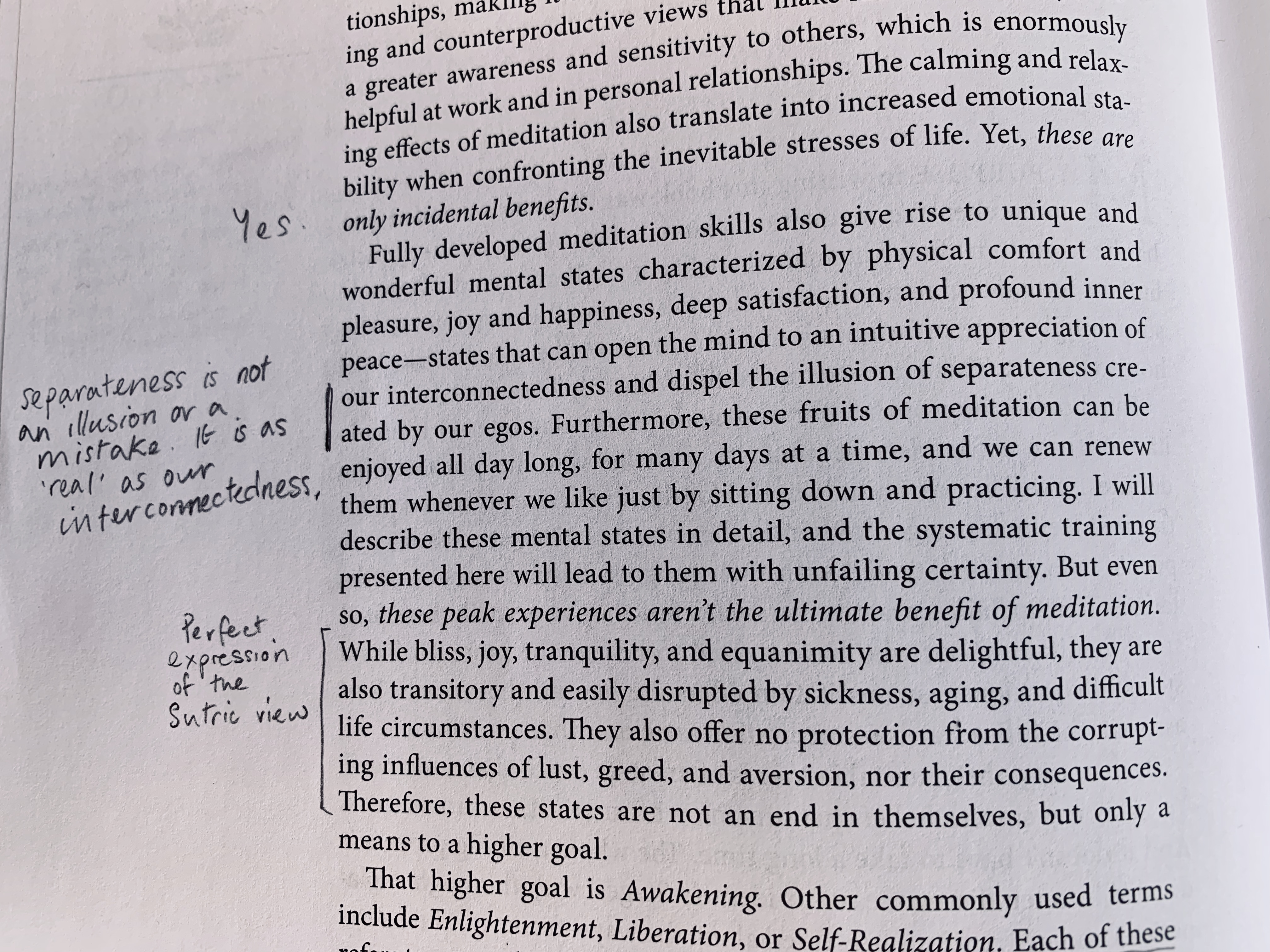
Introduction: page xviii, The Mind Illuminated
These are reflective notes on my experience of practicing Culadasa’s 10 stage meditation system. The notes in this post are from my second day of practice in the system. For an introduction to this project, see this page. Occasionally I will post edit the journal. Any post editing is [in square brackets like this].
The note in the margin of the introduction above, “separateness is not an illusion or a mistake…” expresses my own view. This is reflected in some strands of the Nyingma school of Tibetan Buddhism, in which I’ve practiced. In Buddhism ‘ego’ is usually a translation of ‘atman’ which is, historically, a concept in Sutra. Generally in Vajrayana view the ego is irrelevant and not problematized.
Day 2
[I chose the Mind Illuminated system to practice because I thought it would be a good system to deepen my capacity for concentrative focus.
In Stage 1 of TMI the suggestion is that having your eyes either slightly open or closed will work. I started the practice before having read the chapter on stage 1 and then decided to keep sitting with my eyes closed because it was, indeed, proving interesting and useful in contrast to my norm. So from here on, unless I state otherwise, I practice this system with my eyes closed for meditation.
This is different from my usual sitting practice in which I keep my eyelids suspended, eyes slightly open, to let in some light. I chose to practice with the eyes closed because I thought that would function to emphasize the concentrative nature of the practice. I have more experience in expansive practices than in directedly focused concentration.]
1 hr sit:
- I’m still noticing how the intent focus on the breath seems to narrow and dull my awareness somewhat. I think this is probably a transition symptom. I’m so used to four naljors that my default mode is expansive awareness. Intentionally bringing awareness into a smaller sphere is restricting the ‘vast’ experience without yet having built up the concentrative mode.
- Also, interesting to note how my ‘distraction’ is to slip back into wider awareness, finding presence in the sounds and sphere outside my body that becomes more peripheral with concentration.
- In this way, maintained focus on breathing, but sometimes it was less concentrated & ‘light’ when I forgot to bring my attention internally to a more focal point.
- Became engaged with a thought stream at one point, though didn’t completely lose conscious awareness into it.
- Experienced two nyams1 for the first time in many years. One was a nyam I used to have in the first year or two of practice [when I was still using the breath as support for focus]: felt like my body was ‘outsize’, like it was utterly huge, like one of those enormous Buddha statues in SE Asia. Gigantic. The other was the experience of my nose and front of head disappearing, as in, not existing any more. Reminded me of the effect of practicing lha-tong,2 but it wasn’t quite the same. It wasn’t that the form became transparent, more like it just disappeared and there was only space.
- 1.‘Nyam’ is the Tibetan for ‘side-effect’ of practice, something that occurs while you’re meditating that can be a little weird or disorienting, or is just unusual in some way. The convention in four naljors is to let the experience be, regard it as irrelevant, not an achievement so much as a sign that you’re practicing.
- 2.Lha-tong is Tibetan for ‘further vision’. It is the name of the second meditation practice in the series of four naljors.
